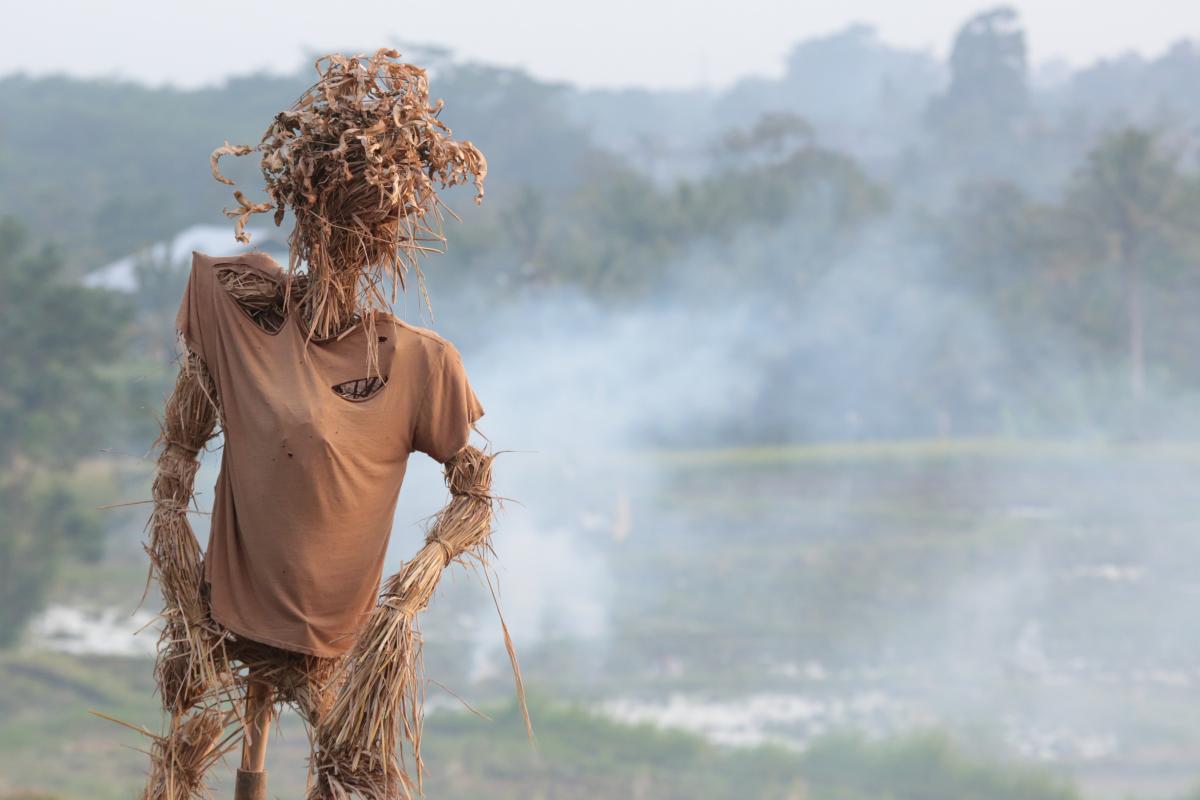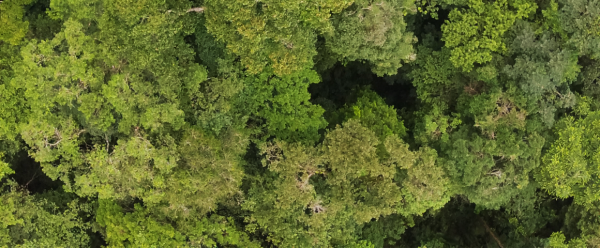Science at work 9 April 2024
- Home
- Press area
- Press releases
- Fires Indonesia
Recurring fires in Indonesia: how might we break the vicious circle?

After Amazonia and Africa, it is now Indonesia that is engulfed in flames. In Sumatra in particular, the culprit is the traditional practice of clearing agricultural land by burning © A. Rival, CIRAD
There's no smoke without fire. This popular saying is now telling a sorry story in Indonesia, where very dense smoke, caused by mega-fires, has darkened the sky, bringing carbon dioxide and particles that are a threat to human health. "This is a recurring phenomenon in Indonesia (Sumatra and Borneo), and the smoke often spreads over several thousand square kilometres, as far as Malaysia and Singapore. The worst years are those in which the El Niño weather phenomenon recurs, like in 2015" , says Philippe Guizol, a forest specialist with CIRAD.
The fires are the result of slash-and-burn cultivation, clearing, hunting practices, and well-entrenched habits of clearing agricultural land by burning. In Sumatra, CIRAD has shown that most fires are triggered by traditional stubble burning, a practice that has very different consequences on mineral and peat soils, with the latter generating denser, more harmful smoke.
Degraded peatland fires are behind the smoke
"It is peat burning that causes this very dense smoke. Once they begin, peat fires are almost impossible to put out, and continue to burn until the next rainy season tops up the water table, often resulting in flooding", Jean-Marc Roda, an economist with CIRAD, explains. These recurring fires prevent forests from recuperating, and affected areas decline steadily, until they become peatland savannah.
Most fires start in zones previously drained for farming and in scrubland areas where deforestation has already destroyed the forest. The fires spread through the peat topsoil, from the subsoil to the remaining degraded forests. "It's a vicious circle: the degraded ecosystem fosters fires, which degrade it even further!"
Just 10% of the fires recorded in a single prefecture in Sumatra generate the equivalent of up to two years of CO2 emissions in France!
Besides the health risks posed by the smoke, these fires generate new greenhouse gas emissions, with an inevitable impact on the climate: "a hectare of peat that burns to a depth of 30 cm emits the equivalent of 250 tonnes of CO2". However, "if we could prevent just 10% of fires in a single prefecture in Sumatra*, we would save the equivalent of up to two years of carbon emissions in France!", Jean-Marc Roda adds.
In such zones, fires often burn out of control due to a lack of natural barriers (dense rainforest, managed agro-industrial plantations, peatlands with sustained water levels, or riverbanks, which often have dense vegetation).
Recycling agricultural waste to prevent fires
While the Indonesian government has taken steps to prevent fires and develop land more safely, the situation varies hugely from one region to another. In Central Kalimantan, the emergence of a form of synergy between players thanks to increased revenue has boosted the territory's capacity to control fires. In South Sumatra, the vastness of the degraded forest zones and the fact that waste biomass is not used to generate revenue hampers the possible synergies between players. Each year, during the dry season, the province is a major contributor to the tally of fires in Indonesia.
Despite this, field surveys by CIRAD and its local partners suggest that smallholders would be prepared to stop burning stubble if they were offered an alternative economic outlet, however small. "Our initial results show that we could reduce the extent of the fires by developing synergies between business and biomass on a territorial scale" , Jean-Marc Roda explains.
In particular, this means adding value to what is currently seen as agricultural waste that farmers are keen to be rid of. In fact, collecting ligno-cellulosic waste can be profitable for local people and SMEs. "For instance, it can be used to make simple composite materials, provide bioenergy, or fuel biorefineries", the researcher points out. "We are currently compiling a social and economic map of the zones in which this type of virtuous circular economy could be developed."
Promoting forest restoration by means of "green zones"
According to Plinio Sist, Head of CIRAD's Forests and Societies Research Unit, this economic dimension to "value" is vital. "We must work with local players to build green zones capable of producing wood and food while rehabilitating fragile forests and ecosystems". He sees the forest management units set up recently by the Indonesian government as the ideal framework within which to promote and develop initiatives aimed at building "green zones".
Alain Rival, CIRAD Regional Director for Indonesia, adds: "Extreme weather phenomena such as El Niño in 2015 and the extended droughts currently affecting Southeast Asia cast doubt on the re silience of monoculture plantations (oil palm, rubber or eucalyptus), which have every interest in shifting towards complex agroforestry systems". Such systems can recycle biomass by composting and eventually create microclimates that foster the development of dense agroforests, capable of stopping fires from spreading, thus breaking the vicious circle.
* study conducted in Ogan Komering Ilir prefecture, South Sumatra.


























